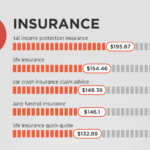Spain is enjoying a positive current account with an export boom and services are doing very well. Can it keep the good times going?
In the past decade, leaving aside the Covid-19-induced recession, Spain’s economy has performed better than the European average. The year 2024 looks to be no different; Spanish GDP is expected to expand to double the average in the euro area: between 1.9% and 2.1%, according to different estimates, versus a range of 0.8% to 1% for its peers. And this is likely to remain true in 2025 as well.
“Things are going great, but the engines of growth are being exhausted.” says Miguel Cardoso, chief economist for Spain at BBVA Research.
A generous fiscal policy, which has helped support the economic expansion, is expected to turn more restrictive soon. Productivity growth remains anemic, and the cost of labor is rising faster in Spain than elsewhere in the region. A dearth of reasonably priced homes only adds to the strain caused by higher inflation and social security costs. Meanwhile, the solid export numbers that turned the current account positive, after decades in the red, are likely to take a hit due to weaker demand from Spain’s European neighbors.
Strong Bank, Weak Lending
The reforms that followed the financial 2008-2009 crisis fixed the banking system, spurring a multitude of acquisitions that has sharply reduced the number of institutions and made the industry more stable, says Juan Dolado, professor of economics at Carlos III University in the Madrid’s greater metropolitan area. After a decade of restructuring, Spanish banks are showing record profits.

“The issue now is that they have extra profit, if anything,” says Dolado, noting the controversial 4.8 % tax the government has imposed on revenue from interest and fees at the largest Spanish banks.
In May, Banco Bilbao Vizcaya Argentaria (BBVA) launched a hostile €12.23 billion bid over smaller rival Banco de Sabadell. The aim is to create a lender with more than 100 customers and assets above €1 trillion—second only to Santander in Spain. After the drastic consolidation that reduced the number of Spanish lenders to 10 from 55 before the 2007-2008 global financial crisis, the Spanish government opposed this deal saying that such a merger could be harmful to customers and jobs.
If banks are more solid today, private lending remains subdued, with limited demand in a climate of low private investment.
“We are struggling to understand the weakness of investment ourselves,” says Oriol Carrera Baquer, senior economist at Caixabank, although this could change with lower interest rates and a pickup in manufacturing across Europe.
“Firms have postponed investment decisions,” says Francisco Quintana, director of investment strategy at ING in Madrid, and lower rates could prompt them to make their move in the coming months. Another factor is the €120 billion in EU recovery funds that Spain is expected to receive.
“In total, Spain is going to get 10% of its GDP, and the execution is halfway through, with a likely acceleration this year and next,” Quintana says.
Reshuffling The Export Mix
More fundamental changes are highlighted by Spain’s shift from a traditionally in-the-red current account, thanks to energy imports, along with a positive trend powered by tourism—around 15% of GDP—and new export categories including automobiles and services.
BBVAs Cardoso notes that services like IT, translations and aspects of consultancy are acquiring a larger presence, suggesting that Spain’s export surge is less dependent than it was previously on the whims of its European neighbors.
“We do not know much about where our exports of services go,” says Cardoso. “We know that quite a bit goes toward Europe, but also another bit goes to the US and Latin America. Those might be related to Spanish firms providing services to their subsidiaries, but they might also be related to high value-added services that were produced in the US. Given the appreciation of the dollar against the euro and the higher growth of wages, it has become more profitable to produce those services from Spain.”
Prospects are bright for investment banking, as well, say some close observers. Despite a dip in the total value of deals, the market for mergers and acquisitions in Spain remained relatively strong last year, according to Barcelona-based law firm Cuatrecasas.
Cuatrecasas expects a slight increase in M&A activity in 2024, assuming interest rates stabilize, the gap between sellers’ and buyers’ valuation of target companies narrows, and banks retain their “considerable amount of dry powder.”

“Strategic sectors will remain dominant,” a recent Cuatrecasas report predicted. “Investors will continue to opt for and be active in strategic sectors, particularly in the technology and energy sectors (probably focusing on renewable energies).”
Renewable energy is “the jewel of the crown,” says ING’s Quintana, and the list of 2023 deals is substantial. Canadian asset manager Brookfield bought the 50% of Spanish renewable energy company X-elio that it still did not own from the US buyout fund KKR for €1.8 billion. French fund Antin launched an €866 million bid for Opdenergy. Amazon reported €670 million of new investments in renewables, while Spanish utility Iberdrola sold a 49% stake in its portfolio of 1,200 megawatts of green energy to Norges Bank for €600 million.
Political Uncertainty
EU budget requirements for member states are still under discussion, but Spain, whose 2023 deficit was around 3.6% of GDP, is expected to tighten up its public spending.
Some economists are pushing structural reforms aimed at improving the country’s productivity by boosting education and creating a less fragmented job market, for example. But political uncertainty remains a nagging problem.
In Madrid’s latest show of volatility, Prime Minister Pedro Sanchez announced that he was stepping down last month, but then, after five days of street demonstrations and statements of support from political allies, he announced he would remain in office. Behind the high drama is a degree of political paralysis that some observers find more disturbing.
“But I don’t think [Sanchez’s about-face] is really that meaningful for the evolution of the economy,” says Caixabank’s Carrera. “Right now, we have a Parliament that is very divided and polarized. This means that it is hard to push forward meaningful structural reforms. And this is what matters.”





